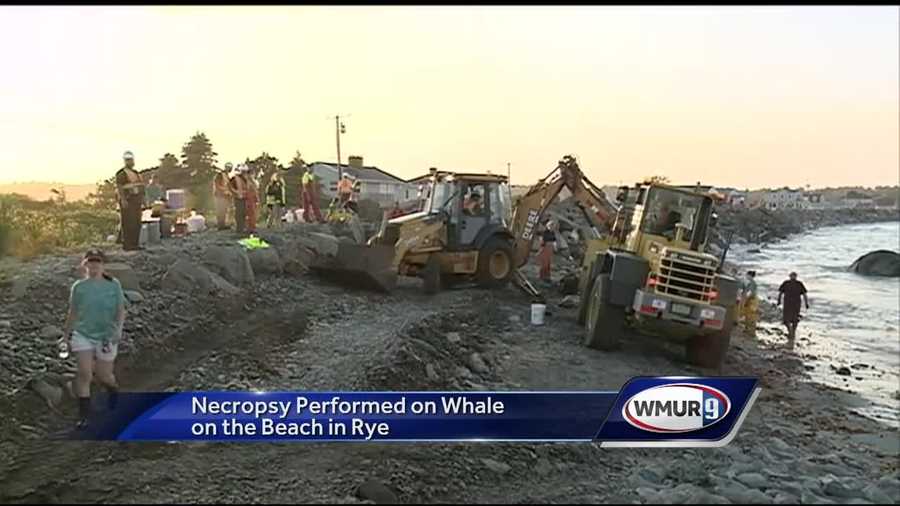Necropsy undertaken to determine cause of whale's death
Onlookers kept at distance while biologists examine humpback whale
Biologists began their investigation Wednesday morning into what killed a humpback whale that washed onto a Rye beach earlier this week.
Click to watch News 9's coverage.
Onlookers were kept at least 100 yards away as the necropsy of the 18-year-old female began. Officials said the public was kept away because heavy equipment was being used and there was a potential biohazard situation.
"It's been overwhelming because it's a certain amount of people that are coming to, like, an ink dot and they are all coming at the same time," Rye Police Chief Kevin Walsh said.
But the operation of removing the beached humpback whale comes to an end today. Everyone agreed that the operative phrase was "team work."
"It was pretty amazing watching the town and state government come together and list out our resources and find the best way to do it. And then what we did, we incorporated the Seacoast Science Center and the aquarium because they wanted to get in to find out how did this happen, which we think is an important part too," Walsh said.
This kind of operation was a first for state Department of Transportation workers, who built makeshift roads down to the beach and used their equipment to remove parts of the enormous mammal.
"What's wonderful to watch is the interplay with them and the necropsy team leaders from the New England Aquarium and the way they just worked together as if they had been doing it all this time," New Hampshire Seacoast Science Center team member Wendy Lull said.
DOT crew members were essential in helping marine biologists perform the painstaking necropsy.
"It is such a delicate operation because this carcass is in a very high state of decomposition and yet it has a lot of scientific value. And so to take a back hoe and try to carefully pull up a rib and just kind of hold it up so that the necropsy can do their fine cutting, I've just been in awe," Lull said.
It took several hours to carefully cut through the layers of the 40-ton mammal, which had been tracked since birth and was named Snow Plow. Experts said humpback whales typically live 40-50 years, so they hope that the necropsy will help them determine what happened.
David Morin, a large mammal expert with the National Oceanic and Atmospheric Administration, said the information obtained from the necropsy will change as the day wears on, leading investigators down different paths.
"It could be down a path, for example, that she has a load of parasites," Morin said. "It could be she has cancer. It could be she has ship-strike trauma. You just kind of have to see, just like in a regular human autopsy, and then you kind of go from there."
The state Department of Transportation had heavy equipment on-site, not only to help move the whale for the biologists, but to remove the soft tissue that is being placed in lined dumpsters.
"It's a learning curve for us. We've never had anything of this big massive biohazard that could happen," Walsh said.
Snowplow's bones will likely be reconstructed and used for research and education and the tons of whale blubber will be turned into compost and fertilizer.
Scientists said the beach should be cleaned naturally by the sea within two tidal cycles - about 24 hours.


